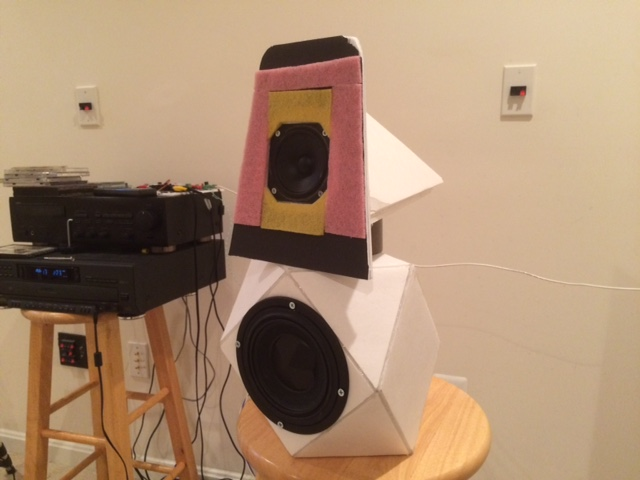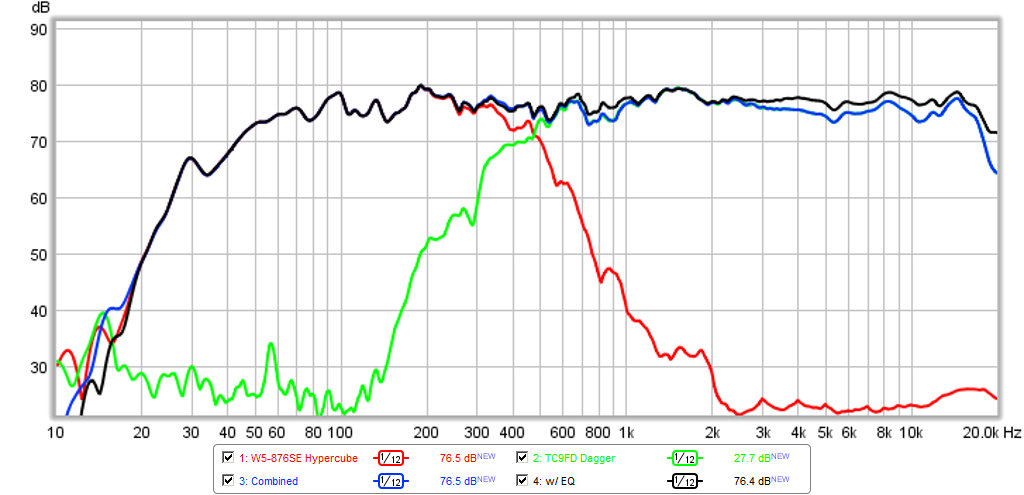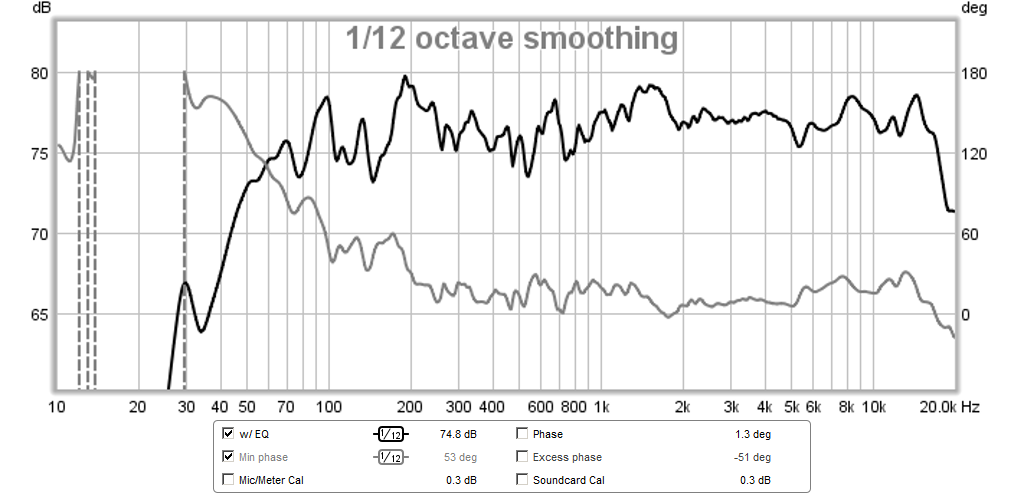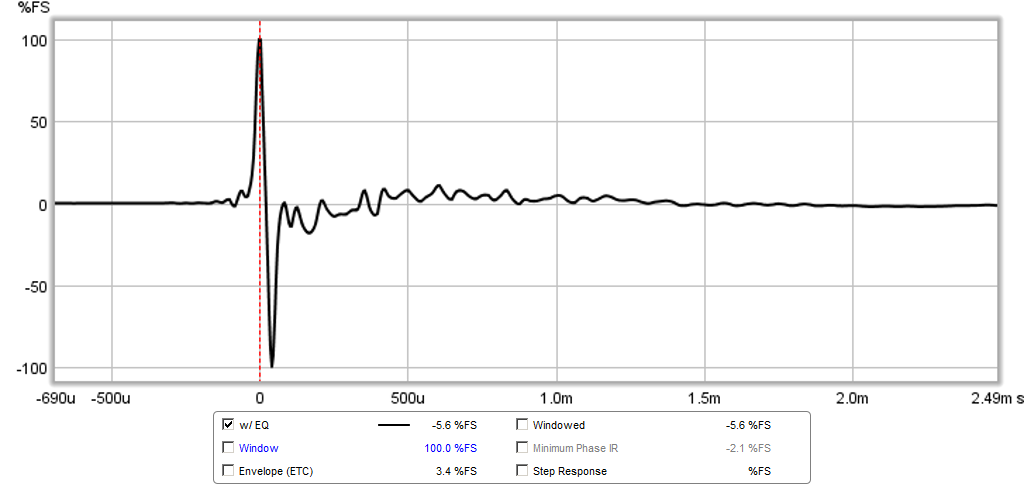Don't forget about _┌┐_┌┐_┌┐_ profile 😉.
🙂 Quite right and today I'm working in the process for the computer and TC9FD box. I rounded the 50 years corner 19 December and even celebration party is planed to be in spring, it took a couple days attention with family where at least one of them i thought would had been used at our hobby.
gmad, sorry i didn't figure out it was meant for xrk971 setup. And very much understanding if you have satisfied SPL and distortion profile no meaning for adding a more complicated setup.
xrk971, 🙂 could be so wrong but listening the Dire Strait track sounds like bass is too delayed at microphone position coming in after top end and this way having it's own signature domain that stands out from rest.
Good ears. The bass horn has a 9.5ms delay (time of flight) and miniDSP only has 7.5ms delay capability so you are probably noticing that 2ms delay. Most people don't catch it. I can also place sub 2ms farther back when being used 100Hz and below. In this case though it's going all the way up to 200Hz or so thus is more noticeable. The 2x8 minDSP has more delay capability.
Last edited:
I just spent a few minutes fooling around with it...seems to work nicely. I used the version found here (not sure if it's different from the other):
Fixed version of DRCDesigner by Alan Jordan - Home Theater Forum and Systems - HomeTheaterShack.com
It uses a slightly outdated drc version (3.2.0) but that could probably be fixed. I made my usual edits to the text file associated with the preset I like to use (erb) and I seem to have gotten my usual results (just going by freq response alone). I think this is probably a good way to go....
gmad,
Would the following be a viable solution?
First take multiple measurements with REW a la Dirac Live RCS sofa solution:
An externally hosted image should be here but it was not working when we last tested it.
Repeating the center measurement at a couple of different heights, say 4 measurements (in my Line Array case) and the one's directly around it about 2 times and the outer ones only one measurement (for each L and R speaker). Average those measurements and let REW calculate the PEQ filters (IIR) for a chosen house curve. The multiple measurements at the center and directly around it would put more weight on that area in the average response.
Then bring in DRC to correct the phase of the speakers at the center position.
I thought of this because I couldn't imagine correcting at only one single position, especially with Line Arrays that always suffer from comb filtering in the higher ranges. Would it be possible with DRC to only correct the phase?
wesayso,
For my needs, I have found a single measurement to be adequate, however, I understand this won't necessarily work well in all cases. I definitely agree with weighing the center positions more heavily and (in the case of line arrays) varying the height of the microphone. With respect to the diagram you provided, perhaps the following could also work (label and organize all measurements as you go so other possibilities could be tried in the future):
-Measure each location at 2 heights (vary the height by 1/2 of the center to center driver spacing)
-Label the average of the 2 center measurements "Measurement 1"
-Label the average of the 8 near measurements "Measurement 2"
-Label the average of the 8 far measurements "Measurement 3"
-Reduce the level of "Measurement 2" and "Measurement 3" by 3db and 6 db respectively and average together with "Measurement 1" to get the final impulse response.
As far as target frequency response goes, I recommend letting DRC handle it. With the psychoacoustic target stage enabled, the resulting sound should be perceived as flat and the postfiltering stage could always be used to define a specific final target (house curve) if desired.
To adjust the strength of the frequency domain correction, you would change the value of PLMaxGain (reducing this value to 1 would prevent freq domain correction) and the frequency range to be equalized is defined by PLStartFreq and PLEndFreq. To achieve a more linear phase response, change PLType from W to P.
I hope this helps. I'm sorry that I don't yet have any personal experiences to share as far as multiple-position correction goes, although now you got me thinking about it...
For my needs, I have found a single measurement to be adequate, however, I understand this won't necessarily work well in all cases. I definitely agree with weighing the center positions more heavily and (in the case of line arrays) varying the height of the microphone. With respect to the diagram you provided, perhaps the following could also work (label and organize all measurements as you go so other possibilities could be tried in the future):
-Measure each location at 2 heights (vary the height by 1/2 of the center to center driver spacing)
-Label the average of the 2 center measurements "Measurement 1"
-Label the average of the 8 near measurements "Measurement 2"
-Label the average of the 8 far measurements "Measurement 3"
-Reduce the level of "Measurement 2" and "Measurement 3" by 3db and 6 db respectively and average together with "Measurement 1" to get the final impulse response.
As far as target frequency response goes, I recommend letting DRC handle it. With the psychoacoustic target stage enabled, the resulting sound should be perceived as flat and the postfiltering stage could always be used to define a specific final target (house curve) if desired.
To adjust the strength of the frequency domain correction, you would change the value of PLMaxGain (reducing this value to 1 would prevent freq domain correction) and the frequency range to be equalized is defined by PLStartFreq and PLEndFreq. To achieve a more linear phase response, change PLType from W to P.
I hope this helps. I'm sorry that I don't yet have any personal experiences to share as far as multiple-position correction goes, although now you got me thinking about it...
Well I thought about taking my described route because every time I average measurements in REW I'd loose the phase information. So I don't yet know how to average impulses. With multiple measurements as a possibility I'd be willing to do it all with DRC and let it do the EQ part as well.
I'm just looking into the usual suspects to figure out what and how they work. Usual suspects being Acourate, Audiolense, Dirac Live RCS etc.
Dirac for example does some phase fixing but with almost no latency introduced it's resolution is quite low I presume? Acourate seems to do all the work based on a single measurement with advanced processing filtering the measured results. That one at least has resolution in it's phase correction (64k taps).
Haven't looked into Audiolense enough yet to know what that does.
I'm just looking into the usual suspects to figure out what and how they work. Usual suspects being Acourate, Audiolense, Dirac Live RCS etc.
Dirac for example does some phase fixing but with almost no latency introduced it's resolution is quite low I presume? Acourate seems to do all the work based on a single measurement with advanced processing filtering the measured results. That one at least has resolution in it's phase correction (64k taps).
Haven't looked into Audiolense enough yet to know what that does.
Last edited:
With one speaker playing at a time, listen from the various positions indicated. If there is no big change in sound, then it's probably safe to use just a single measurement. I believe DRC works in a similar manner to Acourate.
If you need to average impulse responses, use Audacity. Import the files to be combined and amplify all (by the same amount so it can easily be undone) to around - 3db to better see the waveforms. Align the tracks so that the peak sample is in the same vertical position for each, and then undo any amplification. If combining two impulse responses, reduce the level of each track by 6db before exporting, and if combining four or eight, reduce the levels of each track 12 or 18 db respectively.
Last edited:
Hypercube and Dagger TL FAST
Related to this thread - a Dagger short TL with TC9FD has a very nice open sound and clean dynamics:
http://www.diyaudio.com/forums/full-range/268037-fast-tl-8.html#post4192688




Related to this thread - a Dagger short TL with TC9FD has a very nice open sound and clean dynamics:
http://www.diyaudio.com/forums/full-range/268037-fast-tl-8.html#post4192688




- Status
- Not open for further replies.
- Home
- Loudspeakers
- Full Range
- HyperFAST - a Hypercube Based 2-Way